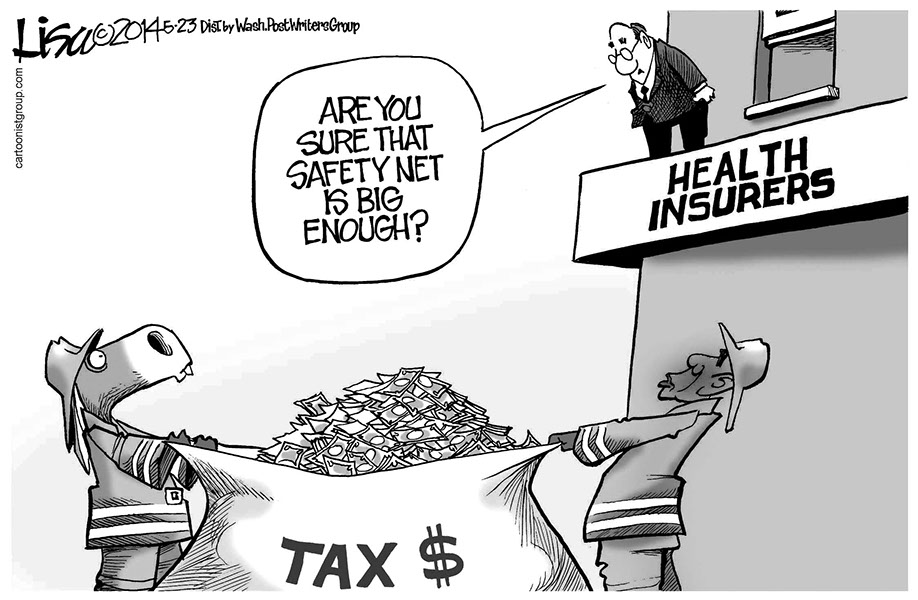
My Take On...
Medicare and Medicine as a Profession
By Andrew D. Coates, M.D., F.A.C.P.
April 12, 2013
The following text is a slightly edited transcript of a radio commentary that Dr. Coates made on April 12, 2013. Dr. Coates is a regular contributor to WAMC’s programming. Medicare is the publicly-funded health benefit package that covers most necessary care for older Americans and people with disabilities.
Medicine (with education, law, and divinity) is one of the traditional professions. The American College of Physicians explains that our profession is characterized by its “specialized body of knowledge that its members must teach and expand, by a code of ethics and a duty of service that put patient care above self-interest.” Elsewhere the ACP speaks of “the profession’s collective responsibility to advocate for the health, human rights, and well-being of the public.”
Medicare covers nearly 1 of every 6 people in the United States. When it was established in 1965 it opened new possibilities for physicians to treat patients. One of my retired physician friends recalls that before Medicare many of his elderly patients from a rural upstate village simply had no way to pay for care. Physicians would treat elderly patients of limited means for free. Often patients would bring homespun gifts or produce to the office as a tribute and a payment.
Today many patients remain unable to pay for care. Many physicians continue to volunteer their services (there are over 1,200 free clinics in the United States). Yet by its very existence, including that this popular public program has worked for 48 years, Medicare reminds us that there is really no excuse for anyone to be denied access to care.
Meanwhile medicine has been buffeted by an explosion of technology together with the steady infiltration of market forces in all aspect of caregiving.
This week Sen. Chuck Grassley, the Iowa Republican, asked Marilyn Tavenner, acting administrator of the Centers for Medicare and Medicaid Services (CMS), about a leak of information from CMS that caused health insurance stocks to soar.
The scandal was the leak of a decision by to raise federal payments to private insurance companies that run Medicare Advantage plans, publicly subsidized private benefit packages that are a private alternative to traditional public Medicare. The Obama administration, which once talked about cutting support to Medicare Advantage companies, reversed itself. Forty minutes before the official CMS announcement health insurance stocks began trading furiously. In the 20 minutes between the official announcement and the market close, hundreds of millions of dollars of shares changed hands, driving the insurance company stock values skyward. Over the next few days the value of private insurance stocks rose by billions.
Because of the decision, UnitedHealth Group, the nation’s largest insurer and the one with the greatest market share in Medicare Advantage, will receive an extra $1.49 billion from Medicare for its Medicare Advantage plans in 2014. On this news, UnitedHealth stock surged in value by over $5 billion – in just one week!
The larger scandal is that we have allowed profiteering into health care.
Medicare Advantage has been a means to privatize the public program of Medicare, a way to divert public resources to insurance company profits. Calling attention to cheating on stock trades neglects the larger scandal: resources meant to go to the care of the sick should not be the source of profits for anyone. According to an analysis by Drs. Ida Hellander and David Himmelstein at Physicians for a National Health Program, the total taxpayer cost of the extra subsidy to Medicare Advantage insurers will be $71.5 billion to $104.5 billion over the next decade, depending on the number of Medicare beneficiaries who enroll in the private plans.
Within the Medicare population the healthy tend to be enrolled in Medicare Advantage, the sick tend to remain – or return – to traditional Medicare.
The trade-off works like this: patients with Medicare Advantage may enjoy the benefit of a free health club membership (something only the healthy can really enjoy), but after a hospitalization, for example, some patients with Medicare Advantage find out that daily co-pays for rehabilitation services, for example, are simply unaffordable. They have to forgo benefits that would have been covered under traditional Medicare. Medicare Advantage works well for insurance company profits. For patients, not so much. As a program it should really be abolished and its resources redirected to traditional, public Medicare. Meanwhile bipartisan efforts to undermine the traditional, public Medicare program gain momentum.
Curiously this is happening a mainstream debate has again focused upon the insanity – and unaffordability – of health care. Steven Brill’s Time magazine article “Bitter Pill” continues to gain readers. Just this week Bloomberg Business Week ran an article by Jeffrey Pfeffer titled “The Reason Health Care Is So Expensive: Insurance Companies.”
Where are the doctors? We have an individual and a collective obligation to the duties of our profession. No longer should we allow the care of our patients to form a substrate for profiteering and enormous bureaucratic waste. We know what it means for our patients when we allow profit-seeking to direct the allocation of resources.
I believe we physicians have a professional duty to protect and expand Medicare as a public program. Medicare is far from perfect, but an expanded and improved Medicare-for-all finance system would not only help our patients. It would help restore our profession to a place where we can better meet our social obligations.
Dr. Andrew Coates practices internal medicine in upstate New York. He is president of Physicians for a National Health Program.
Reprinted with permission.

© Copyright 2013 - 2018 by Pat Hennessy MD MPH Design by Victoria Young Maciulski